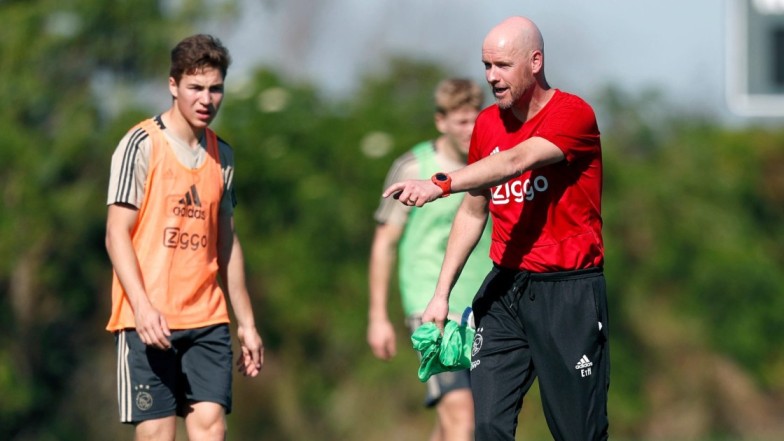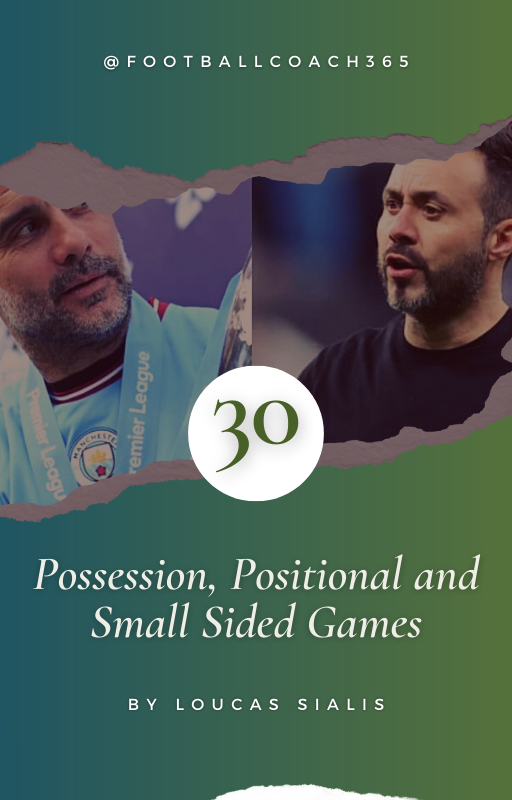Passing is the heartbeat of football, driving both the rhythm of play and the connection between players on the pitch, rotations or positional exchanges. Whether it’s a quick one-two between midfielders, a combination between the line or a long pass to switch play, passing is integral to any team’s strategy. This brings us to a key question: are passing drills in football useful or not? To answer this, we need to explore the role these drills play in player development and overall team performance.
Disclosure: Please note that some of the links below area affiliate links and at no additional cost to you I will earn a commission. Know that i only recommend products services and brands i have personally used and stand behind. When you use one of my affiliate links, the company compensates me, which helps me run this blog and keep my in -depth content free of change for readers (like you). Read our disclosure for more info.
Table of Contents
The Role and Definition of Passing Drills in Football
Passing exercises in football are exercises designed to develop players’ technical skills, specifically focusing on passing and receiving the ball. These drills can be tailored to either attacking or defensive aspects of the game and can be individual or collective, depending on the needs of the team and the specific training objectives. Almost all elite coaches, such as Xabi Alonso, De Zerbi, Erik Ten Hag and so many others, are using the Passing Drills to further develop their player’s technical ability but more to introduce simple and more complex attacking situations.

Types of Passing Drills
Passing exercises can vary widely, with each type serving a specific purpose in player development.
These kind of drills can be categorized based on the level of opposition involved. These categories help in structuring the drills to match the players’ developmental needs and the specific objectives of the training session. The three main types are:
- Unopposed: In unopposed drills, players practice passing and receiving without any defensive pressure. The focus is entirely on the technical execution—perfecting the weight of the pass, accuracy, and first touch. These drills are ideal for beginners or when introducing a new passing concept, as they allow players to concentrate solely on their technique without the added complexity of opponents.
- With Passive Opponents: In drills with passive opponents, the defenders are present but do not actively try to win the ball. Instead, they may shadow or apply light pressure, forcing the attacking players to be more aware of their surroundings and make decisions on where and when to pass. This type of drill bridges the gap between unopposed and fully competitive scenarios, helping players to start thinking about positioning, timing, anticipation and introducing the decision making procedure.
- Semi-Opposed: Semi-opposed drills introduce more realistic opposition, where defenders actively try to intercept passes or close down the space, but the intensity is still controlled. These drills simulate match-like conditions more closely, helping players to apply their passing skills under pressure. They also encourage quick decision-making, spatial awareness, and the ability to adapt to the movements of opponents.
The Benefits of Passing Drills
Soccer Passing drills offer numerous benefits that are critical to player development and team cohesion.
- Technical Mastery Through Repetition: One of the primary advantages of passing drills is the opportunity for players to engage in repetitive practice. Whether it’s a simple pass or a more complex combination, these repetitions help players internalize the technical details of passing, receiving and ball control using left foot and right foot. This repetition is crucial for building muscle memory and developing passing accuracy, ensuring that players can execute these actions naturally during a match. Unlike in small-sided games, where the variety of actions is broader, soccer drills allow for focused practice on specific skills and build the mechanics of the movements.
- Enhancing Team Chemistry and Tactical Understanding: Passing drills are not just about technical skills; they are also a means to build team chemistry. By regularly practicing together, players develop an intuitive understanding of each other’s movements and tendencies on the pitch. When passing drills are aligned with the team’s tactical principles – such as using the “third man” concept in attack – players can internalize these strategies more effectively. This alignment between drills and game strategy fosters a deeper tactical understanding and smoother execution during games.
- Building Confidence and Decision-Making Skills: Confidence on the pitch is built through practice, and passing drills are an excellent way to develop this confidence. As players repeatedly practice passing and receiving, they become more assured in their abilities, which translates into more decisive and effective play during matches. Additionally, drills that simulate game scenarios encourage quick thinking and improve decision-making under pressure, both of which are critical in high-stakes moments.
Potential Drawbacks
While the benefits of basic passing drills are clear, it’s also important to acknowledge their potential drawbacks.
- Overemphasis on Repetition: One of the main criticisms of these drills is the potential for monotony. When drills are too repetitive without sufficient variation, players may become disengaged, leading to diminished returns. This can be particularly problematic if the drills don’t evolve to challenge players as they progress.
- Risk of Reducing Creativity: Football is a dynamic and unpredictable game, and while passing exercises can improve technical skills, there’s a risk that they might stifle creativity if not balanced properly. If players become too accustomed to specific patterns or drills, they may struggle to adapt to the fluid and spontaneous nature of actual match play, where improvisation is often key.
- Physical and Mental Fatigue: Like any form of repetitive soccer training, a passing drill can lead to physical and mental fatigue if overused. This is especially true if the drills are not varied or if they are done at high intensity without adequate rest or variation. Fatigue can negatively impact performance, both in training and during matches, and can also increase the risk of injury.
- Lack of Realistic Situations: Another significant drawback of passing drills is the potential lack of realism. Many passing drills are performed in controlled environments without opponents, which means they do not fully replicate the pressure and unpredictability of actual match situations. In a real game, players must make split-second decisions, adapt to the movements of opponents, and react to the flow of play—all factors that are often absent in standard passing drills. This lack of realistic scenarios can limit the transferability of skills from training to real matches, where the context is much more complex.
30 Possession, Positional and Small Sided Games

Dive into the world of tactical mastery and player development with an expansive collection
- High Tempo Football
- Players develop their technical skills and tactical understanding
- Players cultivate essential life skills such as communication, leadership, and resilience.
- They learn to adapt to varying game situations
- Think critically under pressure, and collaborate effectively with teammates
- Forging bonds that extend beyond the final whistle.
Balancing Passing Drills with Other Training Methods
To maximize the benefits of passing drills while minimizing potential drawbacks, it’s crucial to balance these exercises with other forms of training.
Integrating Tactical and Technical Training
One effective approach is to integrate passing drills with tactical training. For example, drills can be designed to reflect specific match situations or tactical objectives, such as building out from the back or breaking down a compact defense. This integration ensures that players not only develop technical skills but also understand how to apply them within the team’s tactical framework.
Incorporating Small-Sided Games
Small-sided games are an excellent complement to passing drills. These games replicate the competitive nature of a match, requiring players to make quick decisions in a dynamic environment. The reduced space and smaller teams encourage precise passing, quick movement, and teamwork, reinforcing the skills practiced in passing drills while also promoting creativity and adaptability.
Using Game-Like Scenarios
Drills that mimic real match situations are particularly valuable. For example, the “Y Shape” passing drill, when combined with finishing drills, allows players to practice passing sequences that lead directly to goal-scoring opportunities. These types of drills help players transition from passing to shooting, reinforcing the connection between different phases of play.
Expert Insights on Passing Drills
Perspectives on Passing Drills
Expert coaches often emphasize the importance of tailoring passing drills to match the team’s style of play and the specific needs of the players. A well-designed soccer passing drill can simulate real-game scenarios, enhancing both individual player skills and overall team dynamics.
For instance, when working on a team’s attacking strategy, a manager might design drills that with proper coaching points and rules, reflect the formations and movements used in actual matches. If the team frequently utilizes a 4-3-3 formation, the passing drills might involve patterns that replicate the movements of midfielders and wingers in this setup. By consistently practicing these patterns, players develop a natural understanding of how to move and pass within the team’s tactical framework, leading to smoother and more effective play during matches.
Linking Drills to Team Identity
Passing drills can also be an integral part of building a team’s identity on the pitch. For example, if a soccer coach wants to emphasize quick, short passes as a core aspect of the team’s playing style, then passing drills will be designed to focus on speed, accuracy, and maintaining possession. The repeated practice of these drills helps embed these qualities into the team’s DNA, ensuring that the desired playing style is second nature to the players.
Example of Effective Passing Drills
The below example is a Passing Drill taken from the Coach’s Corner package. Click the button below and get access to many passing drills, possession and positional games, small sided games and many more.

Description:
This is a passing drill with a minimum of 7 players. Depending on the physical element of the day, the numbers can change to have different work/rest times. The ball starts from point A. The passes follow the sequence A – B – D – E – C and the players change positions: A→B, B→A, E→G”, D”→F. The same passing and changes continue. The players in positions D and E make two runs (up and down) and rest.
Conclusion
Passing drills are undoubtedly a crucial element of football training. They offer significant benefits in terms of technical skill development, passing technique, tactical understanding, and team cohesion. However, to truly maximize their effectiveness, these drills must be balanced with other training methods that encourage creativity, adaptability, and real-game application.
By integrating passing drills with dribbling drills, small-sided games, tactical exercises, and game-like scenarios, coaches can ensure that players are not only technically proficient with great passing ability, but also well-rounded and prepared for the unpredictable nature of football matches. Whether you’re a coach, player, or fan, understanding the strategic use of passing drills can deepen your appreciation for the details of the game, building a strong offensive team with accurate passing ability that will encourage players to use the ball to control the tempo of the match..
FAQs
- How Often Should Passing Drills Be Practiced?
Passing drills should be a regular part of training sessions, ideally included in every warm-up and integrated into tactical exercises. However, the frequency should be balanced with other forms of training to prevent monotony and overuse.
- Can Passing Drills Improve Game Performance?
Absolutely. Passing drills can significantly enhance a player’s accuracy, decision-making, and confidence on the pitch. When these drills are aligned with the team’s tactical approach, they contribute directly to improved game performance.
- What Are Some Alternatives to Traditional Passing Drills?
Alternatives include small-sided games, which replicate match conditions, and tactical drills that focus on specific aspects of play, such as build-up or counter-attacking scenarios. These alternatives help maintain player engagement and foster creativity.
- How Do Passing Drills Differ for Various Positions?
Passing drills can be tailored to the specific demands of different positions. For instance, midfielders may focus on quick, short passes, while defenders might practice longer, more accurate passes to clear the ball or initiate an attack.
- What Is the Best Way to Keep Passing Drills Engaging?
To keep passing drills engaging, coaches should introduce variety and incorporate competitive elements. This can include varying the drill’s complexity, integrating different types of passes, or adding a scoring component to increase motivation.

